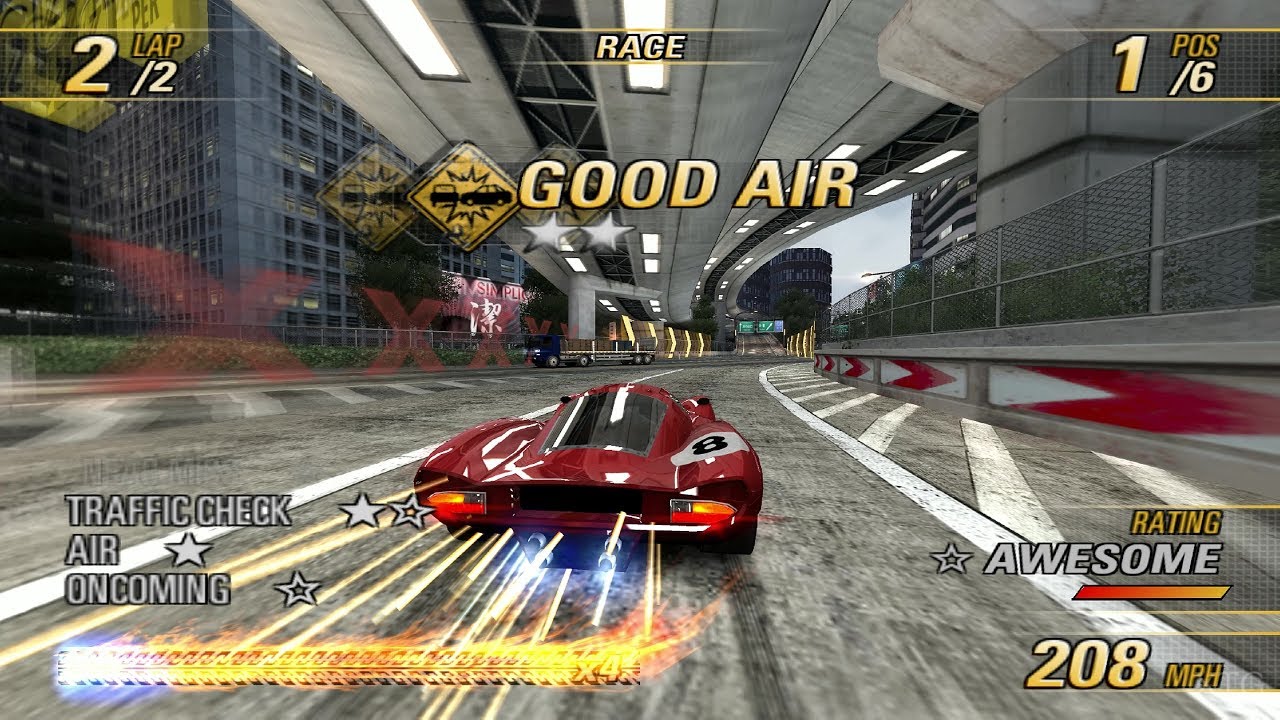reddeadplace.com – Released in 2005, Burnout Revenge quickly became a fan favorite and is often cited as one of the best arcade racing games of its generation. Developed by Criterion Games and published by Electronic Arts, Burnout Revenge is the fourth installment in the Burnout series, but it stands out as a definitive entry that raised the bar for high-speed, crash-heavy racing action. With its focus on destructive gameplay, high-octane action, and intense multiplayer modes, the game remains a cult classic to this day. Let’s take a closer look at what made Burnout Revenge so iconic and why it still holds a special place in the hearts of racing game fans.
1. The Thrill of Destruction: Crash Mode at Its Peak
At the heart of Burnout Revenge lies its unique blend of speed and destruction. The game took the series’ signature crash mechanics and refined them, giving players a thrilling, high-stakes racing experience where smashing into opponents was just as important as crossing the finish line. The introduction of Crash Mode was a standout feature in the series, but in Revenge, it evolved into a more dynamic experience.
In Crash Mode, players would purposely wreck their vehicles at high speed to cause massive chain reactions, sending traffic flying and creating pileups. The more destruction players could cause, the higher their score. What made Burnout Revenge unique was how seamlessly crashes were integrated into the regular race modes. The game introduced a new feature called Traffic Checking, where players could use oncoming traffic to their advantage, forcing opponents into hazardous situations while maintaining their own high-speed momentum. The combination of precision driving and chaotic crashes made for an intense and addicting experience.
2. The Revenge Mechanic: A New Twist
The title Burnout Revenge is not just a catchy name; it directly reflects one of the game’s key features: the Revenge mechanic. In previous Burnout games, players could easily get knocked out of the race or hit by AI opponents, but in Revenge, players could now retaliate in a more satisfying way. If an opponent took you out of the race, you could “revenge” yourself by hitting them in subsequent races, with the game rewarding you for taking out the drivers who previously eliminated you.
This system added an extra layer of strategy to the game, where players had to decide whether to focus on completing a race or take the risk of hunting down the driver who knocked them out earlier. The act of “getting revenge” became one of the game’s most enjoyable aspects, rewarding skillful driving and fast reflexes.
3. Speed and Chaos: A Racing Experience Like No Other
From the moment players hit the accelerator, Burnout Revenge throws them into a whirlwind of speed, destruction, and chaos. The game’s sense of speed is unparalleled for its time, with players feeling like they are constantly on the edge of losing control, yet still able to pull off insane maneuvers at breakneck velocities. The use of Boost—a mechanic where players could fill up a boost meter by driving aggressively and making risky moves—provided even more incentive to keep pushing the limits of their cars. When the boost was fully charged, players could unleash devastating speed surges, further intensifying the racing experience.
What made Burnout Revenge stand out even more was how it kept the action non-stop, even during tight corners and high-risk situations. The constant need to juggle speed and tactics made every race exhilarating, while the potential for massive crashes never seemed too far away. Whether you were weaving through traffic, barreling down the wrong side of the road, or triggering massive explosions with the slightest touch, the game’s relentless pace kept you coming back for more.
4. Innovative AI and Multiplayer Modes
In terms of artificial intelligence (AI), Burnout Revenge pushed the envelope by introducing smarter, more aggressive opponents. The AI drivers were no longer mere obstacles; they actively pursued the player, adapted to their actions, and could even take revenge on players in certain circumstances, making the race feel more dynamic and personal. This made the game’s single-player modes much more challenging and rewarding.
On the multiplayer front, Burnout Revenge offered both split-screen and online play. The online modes were a game-changer, allowing players to race against each other in various modes like Crash Mode, Road Rage, and traditional races. The sense of competitiveness was amplified by the game’s leaderboards, which allowed players to track their rankings and challenge friends to beat their times and scores. The multiplayer experience was fast-paced and chaotic, with players constantly engaging in adrenaline-fueled battles for first place, making it one of the standout features of the game.
5. Stunning Visuals and Soundtrack
For its time, Burnout Revenge boasted impressive graphics that pushed the limits of the PlayStation 2 and Xbox hardware. The detailed environments, dynamic weather effects, and high-speed crashes all helped to create an immersive world that made players feel like they were truly in the middle of the action. The destructible environments, where buildings could crumble and vehicles could explode into fiery wrecks, added to the spectacle and appeal of the game.
The game’s soundtrack was another major highlight, with its mix of rock, punk, and electronic music that matched the high-energy tone of the game. Songs from bands like The Chemical Brothers, Junkie XL, and The Offspring played as players raced through the streets at breakneck speeds, contributing to the game’s adrenaline-pumping atmosphere.
6. Legacy: A Cult Classic
Despite its initial success, Burnout Revenge would be the last entry in the Burnout series to feature the traditional arcade-style racing gameplay that fans loved. Criterion Games later shifted their focus toward the Need for Speed franchise and other projects, leaving fans to wonder if Burnout would ever make a proper return. The series did receive a remaster with Burnout Paradise Remastered, but Burnout Revenge remains a beloved favorite for its tight racing mechanics, epic crashes, and overall high-octane experience.
In an era where realistic driving simulators dominate the racing genre, Burnout Revenge continues to be a standout example of what arcade-style racing can be—pure, unfiltered fun. Its mix of high-speed racing, intense crashes, and multiplayer chaos helped define a generation of gamers and cement its place in the racing game hall of fame.
Conclusion
Burnout Revenge wasn’t just another racing game; it was a high-speed, crash-happy ride that captured the essence of pure arcade racing. Its innovative mechanics, heart-pounding speed, and chaotic crashes set it apart from other games in the genre. Even years after its release, Burnout Revenge remains a benchmark for the kind of high-adrenaline, destructive racing that made the Burnout series so legendary. For anyone looking to relive the thrills of reckless driving and wild crashes, Burnout Revenge is still a must-play title in the world of racing games.






